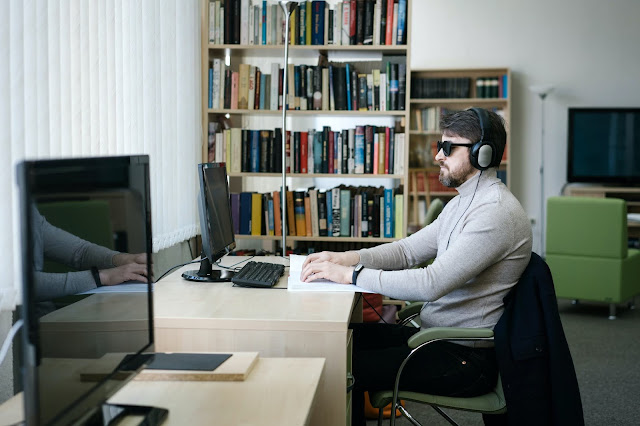 |
| Photo by Mikhail Nilov from Pexels |
Over the last couple of years I have been learning about how we can make webinars and online meetings more accessible for blind and deaf people. This has come through collaboration with a remarkable guy called Oleg Kolpashchikov, who is president of the Russian White Cane organisation. He is totally blind and when we first met at a conference in Kazan in Russia three years ago I was so impressed with how easily he was able to use his iPad, mobile and laptop with the help of all the accessibility tools available today. Since then I have learned how blind people in particular can participate in webinars and online conferences and how we can facilitate their involvement. I admit I have only scratched the surface of this issue but I can share a few insights here.
A central theme of Oleg's work is the concept of extrability. What we so often describe as disability is in fact an extra ability, an extrability. For instance the loss of one sense demands greater use of other senses. Blind people need to develop extremely good memories or their ability to listen effectively. They have a keen awareness of the soundscape around them and this gives them an awareness of space that abled people lack. His organisation works a lot with activities where the abilities of abled and disabled people complement each other and where the development of trust is crucial. In a physical setting this can mean blindfolded seeing people being guided around a town by a blind person or even making food together in a blacked out kitchen. Or even working as a team to sail a yacht where the extrabilities can become very useful (sensitivity to wind direction, sounds etc).
How does this link into online collaboration. It can work very well as long as we make necessary adjustments. Firstly we have to learn to describe ourselves. We usually introduce ourselves by saying our name, what we do and where we live but for blind people you just add a few phrases to describe what you look like - I'm a man in my 60s with short greying hair, glasses, clean shaven and wearing a blue open-necked shirt. For deaf people we need automatic captioning or a sign language interpreter. Blind people can learn from videos as long as they have an audio commentary that describes the visual features of the film as well as the commentary. Here's an example of this that describes the work of Oleg's organisation.
I think we need to give it a good think, accessibility, in both digital and face-to-face teaching. This is my "käpphäst" and I try to mention it whenever I can :)
ReplyDeleteThere are so many aspects to accessibility. We can't do everything but awareness is rising.
ReplyDelete